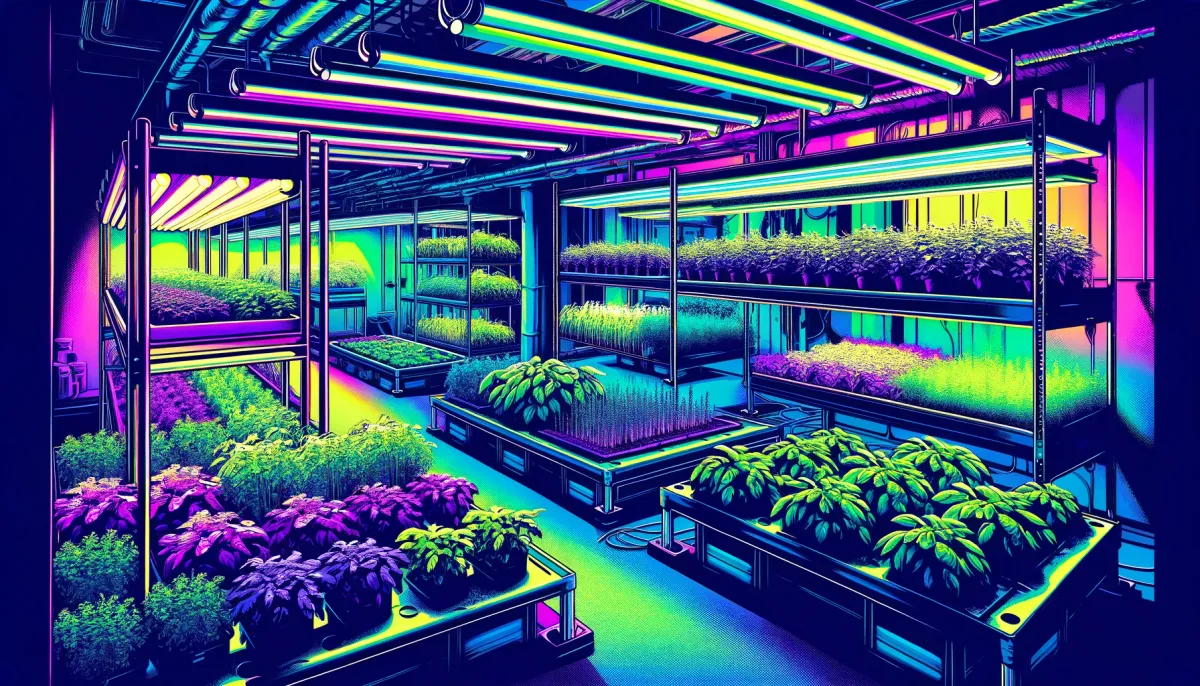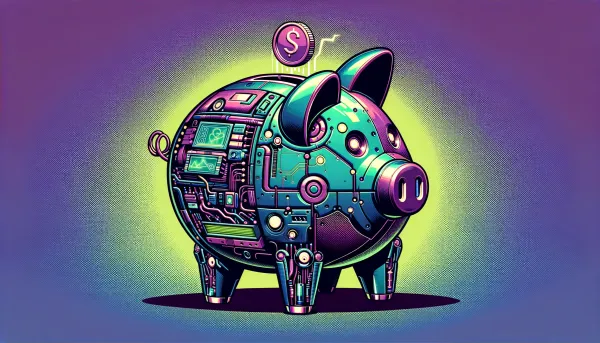Three Paradigms for Investing in the Future of Food
Solving the world's future food supply deficit requires innovation to improve the yield, nutrition and sustainability of existing agricultural practices. Why is the current system insufficient, and what areas will investors focus on going forward?

Technology that redefines our food and agricultural norms will be a significant growth sector over the next generation. Food is a moonshot because its stakes are so high, production must double by 2050 to meet expected demand, and the topic sits uncomfortably between intertwined issues related to climate change, geopolitics, population growth, personal health and changing societal tastes.
The opportunities for food's future comes down to the improvement of three dynamics related to its current state:
- Yield: Absolutes of making food more effectively
- Nutrition: Marginal gains of getting more quality from food
- Sustainability: Efficiencies of providing food with fewer externalities
This article addresses each state and illuminates the areas where investment attention may turn over the coming years.
1. Making Food More Efficiently
Since the Industrial Revolution, intensive agriculture has undoubtedly brought tremendous benefit to humanity. Advances in engineering and agrobiology expanded industry production, propelling ever-cheaper food to plates via a comprehensive global trade network.
Eating behaviours caused by industrial agriculture have brought second-degree externalities that highlight the inefficiencies of mass farming. Cheaper meat and other food products have increased consumption habits, with supply willingly evolving to cater to tastes. Global meat production is now 5x higher than in the 1960s, despite the population only growing by 2.5x.
Meat's popularity results in a system that requires significant amounts of land to sustain livestock. One thousand years ago, we farmed less than 4% of the world's habitable land; now it's 50%. Livestock (rearing and feed production) accounts for 77% of space yet contributes 18% and 37% to the world's calorie and protein consumption, respectively. Mass livestock rearing drains resources because it's a matryoshka doll situation of growing food to feed future food, where each step results in seepage detracting from the output calories. Beef has a 3% conversion efficiency between its calorie and protein inputs and the final output seen on plates.
If everyone in the world had the US's average diet, every inch of habitable land on the planet would require conversion to pasture, and we would still be 38% short. The footprints of beef and mutton alone use almost 50% of total agricultural land in use.
Global Allocation of Agricultural Land Based on Diet Blend
The essence of the dilemma is that more food from less land at a cheaper cost is required to ensure all have access to the elements of a healthy diet. While mechanical and digital engineering has dramatically reduced the human inputs of farming, focus now must switch to the more analogue frontiers of space and biology. Some proponents argue that issues would resolve if the world adopted a plant-based diet, and I don't dispute it. But people should have liberty over the choice of what they eat.
How can we provide meat proteins and other resource-intensive foods in a more efficient manner?
2. Making Food More Nutritious
Improved living standards over the past century saw a rise in daily calorie consumption rise across the board. Food provision is undoubtedly cheaper, but whether we are getting "good" food is the central question here. As populations increase and migrate to cities, the onus on food has shifted from self-sustenance to a consumption-driven market. In developing countries, the vast majority of calories come from carbohydrates.
Percentage of Diet Based on Carbohydrates (y) by National GDP (x) and Population (z)
If the world generally has more food, why is the quality not higher? The reasons are widespread:
- The explosion of cheap processed food sacrifices nutritional benefits
- The shortage of suitable land squeezes supply, increasing prices a balanced diet's components
- Lifestyle changes in how we work and live demand quicker food and promote snacking cultures
- The toil on land has degraded the quality of food produced.
The mineral content of vegetables has fallen over the past century, as intensive farming has degraded soils by depriving them time to renourish. US data shows that the average mineral content of calcium, magnesium and iron in cabbage, lettuce, tomatoes and spinach has dropped by a range of 80-90% since 1941.
In addition to soil depletion, the noble race to scale up food production (e.g. the Green Revolution of the 1960s) to provide access to all came with nutritional compromises through genetic tweaking. Developing varieties of crops with more extensive grain yields meant an increase in starch content, which diluted mineral compositions.
"Efforts to breed new varieties of crops that provide greater yield, pest resistance and climate adaptability have allowed crops to grow bigger and more rapidly … but their ability to manufacture or uptake nutrients has not kept pace with their rapid growth." Donald Davis, University of Teaxas
The world is not on track to meet the United Nations' Sustainable Development Goal of achieving zero hunger by 2030. There are more than 60 million more people undernourished now than in 2014.
With finite agricultural resources, some aspects of a balanced diet have become more expensive to maintain. The goal to provide more and cheaper food has come at the cost of food quality, bringing potential health implications. More impoverished populations are pushed into a diet of pure sustenance, while others more fortunate equally make questionable diet choices through complacency and lack of awareness. Investment in areas that augment diets with better nutrition and understanding is a must.
3. Making Food More Sustainable
The environmental consequences of our food habits exist throughout all parts of the supply chain:
- Inputs: Ammonia, methane and nitrous oxide emissions from animal husbandry
- Processes: Dead zones from irrigation, deforestation consequences (e.g., flooding and desertification)
- Outputs: Pollution from discarded packaging and transport emissions
In total, the entire food industry contributes 26% of the world's greenhouse gas emissions. In recent times, the globalisation of supply chains has brought packaging to the front of mind; plastic wrapping to protect and preserve travel-weary food is now omnipresent across supermarket shelves. While efforts to improve plastic recycling in western economies have been manifold, the amount recycled is still insignificant.
U.S. Recycling Rate by Material: 1990 - 2015
58% of all plastic produced since 1950 was discarded once after use, with only 9% recycled. Plastic from packaging comprised 36% of all plastic made in 2015, and worryingly for food, its packaging is the most abundant item retrieved during Ocean Conservatory's annual beach clean-ups.
Sankey Diagram Showing the Fate of Global Plastic Production: 1950 - 2015
Packaging, emissions and environmental consequences of food go hand in hand. Our desire to eat diverse food, whatever the local season and from the best sources, has created a global comparative advantage system. Be it lamb from New Zealand, blueberries from Peru or wheat from Russia, the footprint of items that appear so convenient is vast and idiosyncratic. A friend with a farm in the plains of Argentina told me that it is cheaper for him to export to China than Buenos Aires internally due to poor internal transportation links.
While efforts to improve yield and nutrition will be supply-driven, sustainability improvements will be demand-led. Consumers are increasingly mindful of the environmental impact of their actions. Buying locally, organically, and sustainably is more the domain of the farmers market crowd, but over time, as prices fall and negative externalities become more inescapable, others will follow.
Investment attention in this sector has a range of motivations. Many become enlightened to the notion that doing good for the world can be exciting and financially lucrative (e.g., electric vehicles). As carbon trading schemes and net neutrality pledges come to the fore, investors see opportunities. On the other hand, brands notice more loyalty value with consumers from having a sustainable halo. Finally, households are getting the tools to empower them to take charge of their personal supply chains.
Geopolitics also comes into play. As tit-for-tat trade wars stoke more patriotic government policy, food self-sufficiency's strategic importance comes to the fore. Localised supply chains may be one such factor that nations look to reinforce.
The Moonshot Sectors to Watch Out For
Changing the norms and behaviours of 7.7 billion people needs a long-game mentality, with many carrots attached to a long stick. Fortunately, now appears an opportune time, with attention and funds focused on private innovation investment being at all-time highs.
The 2020s may herald in the third wave of innovation investing since the Millenium (the prior two being Web 1.0 and 2.0), where through the sheer amount of money available, attention will shift to the trillion-dollar challenges we face as a society: climate change, education, healthcare, space exploration and food.
Food innovations should focus on the three paradigms mentioned: yield, nutrition and sustainability. Some of the sectors that will be important in this are.
Alternative Proteins
Some see adopting a plant-based diet as a fast and impactful way to solve food issues. While certainly not a panacea - certain nuts, coconuts and avocados have significant water and land requirements - innovations will continue to flourish in bringing plant-based proteins into our diet. I look at a company like Beyond Meat as being in its first stage: replicating the norm by introducing a plant-based burger that looks and feels like its meaty counterpart. The next step should see increased efforts to innovate the tastes, aroma, and local sourcing of plant-based proteins. There will be innovations in creating new recipe concepts that accentuate plant-based ingredients, think: new meal concepts instead of a vegan lasagne.
Insect-proteins could be another gamechanger. On a pound-for-pound basis, insects are expensive on the protein spectrum through not being farmed at scale. While some consumers may be averse to eating crickets, the real prize may be using them as animal feed. The world's largest insect protein facility in Illinois was announced in 2021, a partnership between ADM and InnovaFeed, which expects to bring scaled output. The annual per acre production of protein (in lbs) from black spider flies is 136,500, versus 959 for soy and 43 for cattle.
Microalgae is another area with potential as an alternative feed source and fertiliser. Currently, only 15 out of 300,000 species are used in the human, animal and pharmaceutical sectors, suggesting that more discoveries are to come. Microalgae offer flexible advantages; they can be grown year-round in various areas (including saltwater), be sustained solely from the sun and produce protein yields 15x higher than terrestrial crops.
Getting more out of land is necessary, and animal feed is the part that looks to be in the crosshairs.
All-in-One Meals
While products like Huel and Soylent market to time-pressured, body-hacker audiences, the notion of an all-in-one nutritious meal shake could be revolutionary in the third world. The concept of a long-life powder-based shake with a complete nutritional palette derived from plant-based ingredients sounds relatively benign. But, look for the product's success to be repositioned in developing markets and as substitutes for processed food meals on planes, schools, prisons and the like.
Lab-Grown Meat
In late 2020, Singapore's Food Agency approved Eat Just's lab-grown "chicken bites", a morsel grown from a (non-live) chicken cell bank and combined with live plant-based ingredients inside a bioreactor. Various other startups are chasing the same goal of replicating meat (named "cultured") and, while seemingly dystopian, promises to be revolutionary (if pulled off) for solving nutrition, yield and sustainability issues with livestock farming.
Meat is a $1.4 trillion market, a size that will continually attract existing businesses and new innovators to build a menu of cultured meat alternatives. While prices are currently high, Moore's Law turns its wheels: The first lab-grown burger cost €250,000 in 2013 and Future Meat's chicken product has seen a 1,000x cost reduction over three years. The fish market may be the big prize here due to sea trawler practices' inefficiencies and environmental degradation.
For cultured meat to become a commercial reality, challenges must be overcome across the entire food chain, from businesses facing disruption to suspicious consumers. For that, I see opportunities for the movement to lean heavily on direct-to-consumer food delivery methods and hardware devices for home production.
Digital Farms
Farms have embraced mechanisation and bioscience over the past centuries. For better or worse, genetically modified crops, fertiliser improvements and no-till farming, all examples of how the industry iterates and adopts new ideas. Going forward, the new wave of electrified and autonomous technology will inevitably arrive in a field near you. Farm technology is a very entrenched industry to upend, so look for change instigated by traditional incumbents.
Best practices will transplant from tangential industries, such as IoT and drone devices, to deploy resources more precisely and analytical tools for performance measuring. There will also be moves to upend the rigid leverage imposed on farms by traditional supermarket supply chains through financing and farm-to-plate solutions.
As the high street regresses into the post-retail age, it's certainly plausible that urban farms will release the shackles of goat petting and allotment sheds to proliferate in the cheap space available: Think, an illegal cannabis farm crossed with an Apple Store. Advances in hydroponic technology (growing crops without soil) and juicer retail margins from selling directly to local shoppers could see urban farming become economically attractive.
For individual households, the vertical garden movement should sprout whole new sub-sectors in areas of interior design, peer-to-peer food exchange and horticulture products.
Packaging and Social Capital
Continuous improvement in bioplastics and degradable packaging will arrive due to regulatory and consumer pressures. Searching for packaging innovation shows an array of incredible concept ideas, such as bottles made from algae.
Where packaging may see more innovative attention is in the areas of traceability and accountability. Tracking the provenance of food may lead to behaviour change by providing consumers with greater awareness of their footprint. For example, assigning QR codes on packaging could allow consumers to hold councils accountable for items sent to recycling.
Good behaviour can be encouraged through social signalling and the peril of jeopardy. While I don't foresee a system of Chinese-esque social credit worldwide, lessons from contemporary marketplace models (e.g., Airbnb) may inspire future models for encouraging consumers to lower their waste footprint.
Increasing the life of food would help to reduce perishable wastage and ease logistical pressures. While the shortening of supply chains will invariably provide benefits of longer shelf lives, other mooted concepts ranging from using blue light, microwaves, plasma, bacteria and radiation to remove contaminants and prolong life could eventually gain traction.
Overcoming the Challenge of Habits
The hard part about the future of food is that it clashes with ideologies linked to what we perceive as our natural habits as humans. When you ask someone eating a steak if they want to swap it for a lab-grown one, it will instantly evoke thoughts of breaking an instinctive chain linking back to ancestors.
The best way to incentivise change is to redefine the paradigm instead of artificially replicating it. For that, when looking at concepts like insect protein, meal shakes, and lab-grown meat, I think efforts will go towards communicating the benefits of this new way of eating, over trying to use subterfuge to make it appear like the existing norm.




